Why Was Cannabis Made Illegal? The Real Story Behind Cannabis Prohibition
The prohibition of cannabis represents one of the most complex and controversial chapters in modern legal history. What began as a plant used for centuries across cultures for medicinal, industrial, and spiritual purposes became the centerpiece of a global war on drugs. Today, as we witness the THCa decriminalization movement gaining momentum, it's crucial to understand how we arrived at this point and why compounds like THCa remain caught in a web of legal complexity.
The story of cannabis prohibition isn't just about one plant—it's about fear, prejudice, economic interests, and political power. From the early 20th century's xenophobic campaigns to modern revelations about the political motivations behind the War on Drugs, the real story reveals how THCa prohibition history and broader cannabis criminalization were built on foundations that had little to do with public health and everything to do with social control.
Understanding this history is essential as we navigate today's evolving legal landscape, where THCa legal status evolution continues to challenge lawmakers, consumers, and businesses alike. Let's examine how cannabis went from medicine cabinet staple to Schedule I controlled substance, and why the distinction between THCa vs THC legal differences matters more than ever.
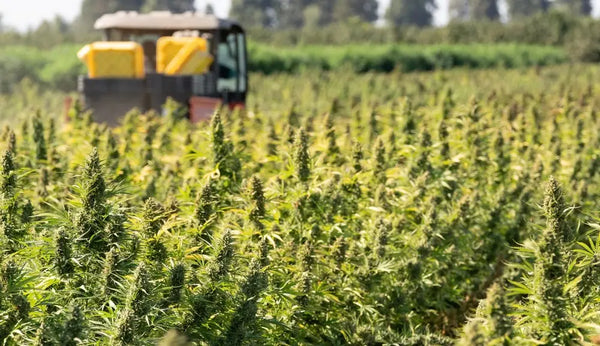
The Early 1900s: Seeds of Prohibition in Immigration Fears and Racial Prejudice
The roots of cannabis prohibition in the United States stretch back to the early 1900s, when the plant became entangled with immigration fears and deeply rooted racial prejudices. Cannabis had been widely used in American medicine since the 1840s, with pharmaceutical companies like Parke-Davis producing cannabis-based medicines that were sold in pharmacies across the country. However, the social and political climate of the early 20th century created fertile ground for prohibition.
The Mexican Revolution of 1910 brought an influx of Mexican immigrants to the southwestern United States, and with them came the practice of smoking cannabis recreationally—something that was less common among white Americans who primarily knew the plant as medicine. Anti-immigrant sentiment quickly focused on this cultural practice, with local newspapers and politicians using inflammatory language to describe cannabis use among Mexican communities.
This period marked the beginning of what would later influence THCa criminalization reasons, as authorities began to view all forms of cannabis through the lens of moral panic rather than scientific evidence. The distinction between different cannabis compounds wasn't well understood at the time, but the precedent being set would eventually encompass all cannabinoids, including THCa.
Local and state governments began passing anti-cannabis laws, often explicitly targeting Mexican immigrants. El Paso, Texas, banned cannabis in 1915, followed by California in 1915 and several other southwestern states throughout the 1910s and 1920s. These early laws were characterized by overtly racist language and enforcement, setting a pattern that would persist for decades.
The fear-mongering extended to other minority communities as well. Jazz musicians, many of whom were African American, were known to use cannabis, leading to associations between the plant and what white society viewed as dangerous or immoral behavior. This cultural targeting laid the groundwork for the federal prohibition that would follow, establishing cannabis as a symbol of social deviance rather than recognizing its medicinal properties.
These early prohibition efforts also demonstrated how little scientific understanding existed about cannabis compounds. The complex chemistry of the plant, including the distinctions that would later become crucial in understanding THCa vs THC legal differences, was largely unknown. This scientific ignorance would prove instrumental in enabling the sweeping prohibition that was to come.
Harry Anslinger and the Federal Bureau of Narcotics Campaign
No figure looms larger in the history of cannabis prohibition than Harry Jacob Anslinger, who served as the first commissioner of the Federal Bureau of Narcotics from 1930 to 1962. Anslinger's crusade against cannabis would shape THCa prohibition history and establish the foundation for decades of criminalization that continues to influence policy today.
When Anslinger took control of the newly formed Federal Bureau of Narcotics in 1930, cannabis wasn't initially on his radar. The bureau was primarily focused on opium and cocaine, substances that had been regulated under the Harrison Narcotics Tax Act of 1914. However, as the Great Depression tightened federal budgets and reduced the perceived need for drug enforcement, Anslinger needed a new enemy to justify his agency's existence and funding.
Cannabis became that enemy. Anslinger launched a media campaign that was unprecedented in its scope and inflammatory rhetoric. He testified before Congress that cannabis was "the most violence-causing drug in the history of mankind," despite having little scientific evidence to support such claims. His campaign relied heavily on sensationalized stories, often featuring minority communities and portraying cannabis users as violent criminals and sexual deviants.
The Anslinger campaign was particularly effective because it tapped into existing racial prejudices and moral panics. He collected newspaper clippings of violent crimes allegedly committed by cannabis users, though many of these stories were later found to be exaggerated or fabricated. His "Gore Files" became the basis for congressional testimony that would ultimately lead to federal prohibition.
What makes Anslinger's campaign particularly relevant to modern THCa scheduling history is how broadly he painted his prohibition brush. His agency made no distinction between different uses of cannabis or different compounds within the plant. Industrial hemp, medical cannabis, and recreational use were all lumped together under the umbrella of "marihuana"—a term Anslinger deliberately used to emphasize the plant's association with Mexican immigrants.
Anslinger's influence extended far beyond American borders. He played a key role in international drug control efforts and helped establish the framework that would eventually encompass global cannabis prohibition. His work laid the groundwork for treaties and conventions that would influence THCa legal status evolution worldwide, creating international pressure for prohibition that persists today.
The Federal Bureau of Narcotics under Anslinger also established enforcement patterns that would characterize THCa law enforcement for decades to come. The focus was on punishment rather than treatment, criminalization rather than regulation, and moral condemnation rather than scientific understanding. These approaches created a self-reinforcing cycle where prohibition justified more prohibition, and enforcement problems were used as evidence that even stronger enforcement was needed.
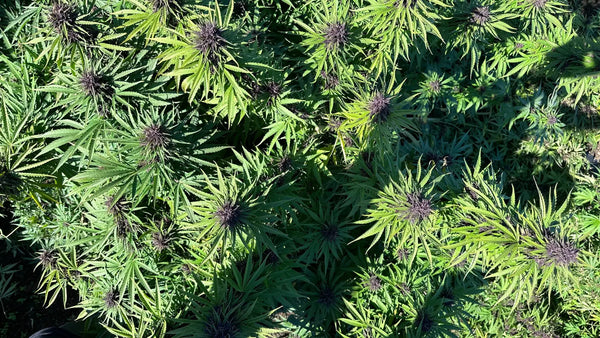
Economic Factors: The Industrial Interests Behind Prohibition
While racial prejudice and moral panic provided the public face of cannabis prohibition, powerful economic interests operated behind the scenes to ensure that cannabis remained illegal. Understanding these economic factors is crucial to comprehending why THCa criminalization reasons extended far beyond public health concerns and into the realm of industrial competition and profit protection.
The timber industry had significant reasons to oppose hemp cultivation. Hemp fiber could be processed into paper more efficiently and cheaply than wood pulp, and hemp paper was more durable and longer-lasting. William Randolph Hearst, the newspaper magnate, owned vast timber holdings and pulp mills. Hearst's newspapers played a crucial role in the anti-cannabis propaganda campaign, publishing sensationalized stories about "marihuana" and its alleged dangers. The use of the Spanish term "marihuana" instead of the familiar "cannabis" or "hemp" was a deliberate strategy to make the plant seem foreign and dangerous.
The cotton industry also viewed hemp as a threat. Hemp fiber could be used to make textiles that competed directly with cotton products. The DuPont chemical company, which had developed synthetic fibers like nylon, saw natural hemp fiber as competition for their new products. DuPont had invested heavily in developing synthetic alternatives and patents, and hemp's versatility threatened to undermine these investments.
Perhaps most significantly, the pharmaceutical industry had concerns about cannabis medicines. While cannabis-based medicines were widely available and effective for treating various conditions, they were difficult to patent because they were natural compounds. Pharmaceutical companies were increasingly focused on developing synthetic drugs that could be patented and provide exclusive profits. The prohibition of cannabis eliminated competition from natural medicines and pushed patients toward patentable synthetic alternatives.
These economic motivations help explain why THCa legal research barriers became so entrenched. Research into cannabis compounds threatened not just the prohibition narrative but also the economic interests that benefited from that prohibition. If scientific research had been allowed to proceed, it might have demonstrated the medical value of various cannabinoids, undermining the justification for prohibition and potentially costing industries billions in lost profits.
The Marihuana Tax Act of 1937, which effectively prohibited cannabis at the federal level, was crafted to serve these economic interests while maintaining the appearance of being primarily concerned with public health. The act didn't technically ban cannabis but imposed such onerous taxes and regulations that compliance was practically impossible. This approach allowed legislators to claim they weren't prohibiting a plant that had legitimate industrial and medical uses while effectively eliminating those uses.
The American Medical Association opposed the Marihuana Tax Act, recognizing that it would eliminate legitimate medical uses of cannabis. However, their opposition was overwhelmed by the combined forces of federal law enforcement, industrial interests, and media propaganda. The AMA's concerns about losing access to a valuable medicine were dismissed, setting a precedent for how scientific and medical opinions would be marginalized in drug policy decisions.
Media Manipulation: Reefer Madness and the Propaganda Machine
The role of media manipulation in cannabis prohibition cannot be overstated. The campaign against cannabis relied heavily on sensationalized films, newspaper articles, and government propaganda that bore little resemblance to reality. This media blitz not only shaped public opinion but also created the cultural foundation that would support THCa prohibition history and make questioning cannabis laws seem unthinkable for generations.
The most infamous example of anti-cannabis propaganda was the 1936 film "Reefer Madness," originally titled "Tell Your Children." Funded by a church group and later purchased by producer Dwain Esper, the film depicted cannabis users as violent maniacs who committed murder, suicide, and rape after smoking the "devil's weed." While the film was intended as serious propaganda, its outrageous claims and melodramatic acting made it unintentionally comedic—though audiences at the time often took it seriously.
"Reefer Madness" was just one part of a broader media campaign orchestrated by Harry Anslinger and supported by newspaper publishers like William Randolph Hearst. Hearst's newspapers regularly published stories with headlines like "Marihuana Makes Fiends of Boys in 30 Days" and "Hasheesh Goads Users to Blood-Lust." These stories typically featured young people, often from minority communities, committing heinous crimes allegedly under the influence of cannabis.
The propaganda machine was remarkably sophisticated for its time. Anslinger's Federal Bureau of Narcotics actively supplied newspapers with ready-made stories about cannabis-related crimes. Many journalists simply reprinted these government press releases without investigation or verification. The result was a media echo chamber that amplified the anti-cannabis message across the country.
This media manipulation had lasting effects on how cannabis and its compounds would be perceived for decades. The sensationalized imagery and moral panic created around cannabis use established cultural associations that would influence THCa legal status evolution long after the original propaganda was discredited. Even today, discussions about cannabis policy often invoke imagery and concerns that trace back to these early propaganda efforts.
The propaganda also established a pattern of ignoring scientific evidence in favor of emotionally charged anecdotes. Rather than conducting systematic research into cannabis effects, authorities relied on selected cases and inflammatory stories. This approach created THCa legal research barriers by establishing the principle that moral and political considerations should override scientific inquiry in drug policy.
Educational institutions and civic organizations were enlisted in the propaganda effort. Schools showed anti-cannabis films and distributed literature warning of the plant's dangers. Churches and community groups organized campaigns against the "marihuana menace." This broad-based effort created a cultural consensus against cannabis that made questioning prohibition seem not just politically dangerous but morally suspect.
The international reach of American media also helped spread anti-cannabis propaganda globally. American films, newspapers, and government materials influenced attitudes toward cannabis in other countries, contributing to the international pressure for prohibition that would later be formalized in international treaties. This global reach helps explain why THCa decriminalization movement efforts today must contend with entrenched attitudes that were shaped by decades of propaganda.
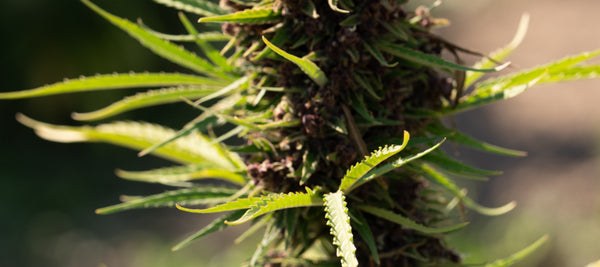
International Pressure: The Single Convention and Global Prohibition
The transformation of cannabis prohibition from a primarily American phenomenon to a global policy framework represents a crucial chapter in THCa scheduling history. The Single Convention on Narcotic Drugs of 1961 internationalized cannabis prohibition and created the legal framework that continues to complicate cannabis reform efforts worldwide today.
The path to international prohibition began in the 1920s with the International Opium Conventions, which primarily focused on opium and cocaine. Cannabis wasn't initially included in these early international agreements, reflecting its relatively minor role in global drug control efforts at the time. However, as countries like the United States pushed for broader international drug control measures, cannabis became swept up in the expanding prohibition framework.
The Single Convention on Narcotic Drugs, negotiated throughout the 1950s and finalized in 1961, represented the culmination of international prohibition efforts. The treaty was designed to consolidate and strengthen various existing drug control treaties, creating a unified global approach to drug prohibition. Cannabis was included in Schedule I of the treaty, alongside substances like heroin, indicating that it was considered to have no legitimate medical use and high potential for abuse.
The inclusion of cannabis in the Single Convention had profound implications for THCa legal status evolution globally. Countries that signed the treaty were obligated to prohibit cannabis cultivation, distribution, and use except for scientific and medical purposes under strict government control. This international obligation created significant barriers to cannabis reform, as countries attempting to liberalize their cannabis laws faced pressure to maintain compliance with their treaty obligations.
The American influence on the Single Convention was substantial. Harry Anslinger, still leading the Federal Bureau of Narcotics, played a key role in the negotiations. The American position was that cannabis should be treated as strictly as possible under international law, with minimal exceptions for medical or scientific use. This position reflected the domestic American approach to cannabis prohibition and extended it globally.
The treaty's language regarding cannabis was particularly problematic because it made no distinctions between different cannabis compounds or uses. Industrial hemp, medical cannabis, and recreational use were all treated identically under the convention. This broad approach would later create complications for understanding THCa vs THC legal differences in international law, as the treaty's blanket prohibition didn't account for the complex chemistry of cannabis.
The Single Convention also established the International Narcotics Control Board (INCB) to monitor treaty compliance and pressure countries to maintain prohibition. The INCB would later become a significant obstacle to cannabis reform efforts, regularly criticizing countries that attempted to liberalize their cannabis laws. This international pressure created additional THCa legal research barriers as countries were discouraged from conducting research that might undermine the prohibition framework.
The treaty's impact extended beyond formal legal obligations. It created a global culture of cannabis prohibition that influenced domestic policies even in countries where cannabis wasn't seen as a major social problem. Countries that might have otherwise maintained more liberal cannabis policies felt pressure to conform to international standards, creating a global race to the bottom in terms of cannabis criminalization.
The War on Drugs: Nixon Era Escalation and Political Weaponization
The election of Richard Nixon in 1968 marked a dramatic escalation in cannabis prohibition that would fundamentally reshape THCa prohibition history and establish the modern framework of drug criminalization. Nixon's "War on Drugs" represented not just a policy shift but a deliberate political strategy that used drug prohibition as a tool for social control and political advantage.
Nixon's approach to drug policy was heavily influenced by domestic political considerations. The late 1960s had seen significant social upheaval, with anti-war protests, civil rights demonstrations, and a growing counterculture movement that often embraced cannabis use. Nixon and his advisors saw drug prohibition as a way to target these political opponents while appearing to address a legitimate public health concern.
The political motivations behind Nixon's drug war were later confirmed by John Ehrlichman, Nixon's domestic policy advisor, who revealed in a 1994 interview that the administration's drug policy was explicitly designed to target political enemies. Ehrlichman stated: "We knew we couldn't make it illegal to be either against the war or black, but by getting the public to associate the hippies with marijuana and blacks with heroin, and then criminalizing both heavily, we could disrupt those communities."
This admission is crucial to understanding THCa criminalization reasons during this period. The escalation of cannabis prohibition wasn't based on new scientific evidence about the plant's dangers but on political calculations about social control. This political weaponization of drug policy would have lasting effects on how cannabis and its compounds would be treated in law and policy.
Nixon's drug war involved massive increases in federal drug enforcement funding and the creation of new enforcement agencies. The Drug Enforcement Administration (DEA) was established in 1973, consolidating various federal drug enforcement efforts under a single agency. The DEA's creation institutionalized the enforcement-focused approach to drug policy and created a powerful bureaucratic constituency with a vested interest in maintaining prohibition.
The Controlled Substances Act of 1970 provided the legal framework for Nixon's drug war. This act created the modern system of drug scheduling, placing cannabis in Schedule I alongside substances like heroin and LSD. The Schedule I designation indicated that cannabis was considered to have no legitimate medical use and high potential for abuse, despite limited scientific evidence supporting these conclusions.
The scheduling decision had profound implications for THCa scheduling history. The Controlled Substances Act's broad language encompassed all cannabis compounds, effectively prohibiting research into the medical potential of cannabinoids like THCa. This created a circular logic where lack of research was used to justify continued prohibition, while prohibition prevented the research that might demonstrate legitimate medical uses.
Nixon's drug war also established the principle of harsh criminal penalties for drug offenses. Federal sentencing guidelines created mandatory minimum sentences for drug crimes, leading to explosive growth in prison populations. The focus on punishment rather than treatment or prevention would characterize American drug policy for decades and influence THCa law enforcement approaches worldwide.
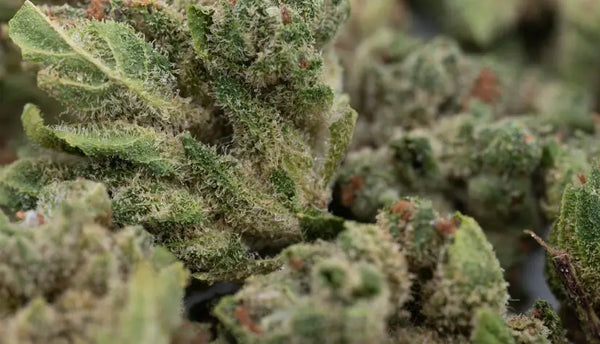
Modern Understanding: Admissions of Political Motivations and Scientific Evidence
As we've moved into the 21st century, a clearer picture has emerged of the political motivations behind cannabis prohibition and the mounting scientific evidence for the medical benefits of cannabis compounds. This modern understanding is reshaping THCa legal status evolution and challenging the foundation of prohibition policies that have persisted for nearly a century.
The admission by Nixon administration officials that the War on Drugs was politically motivated rather than evidence-based represents a watershed moment in understanding prohibition history. John Ehrlichman's 1994 revelation that the drug war was designed to target political enemies rather than address public health concerns has been supported by additional evidence and testimonies from other officials involved in crafting these policies.
Similar admissions have come from other periods of prohibition escalation. Former DEA administrators have acknowledged that cannabis scheduling decisions were often made for political rather than scientific reasons. These revelations have undermined the credibility of prohibition advocates and provided ammunition for reform efforts seeking to challenge THCa prohibition impact on communities and individuals.
Meanwhile, scientific research into cannabis and its compounds has accelerated dramatically in recent decades, despite continuing THCa legal research barriers. Advances in analytical chemistry have allowed researchers to identify and study dozens of different cannabinoids, including THCa, revealing a complex pharmacological profile that contradicts simplistic prohibition narratives.
Research into THCa specifically has revealed significant medical potential. Unlike THC, THCa is non-intoxicating in its raw form, which has important implications for understanding THCa vs THC legal differences. Studies have suggested that THCa may have anti-inflammatory, neuroprotective, and anti-nausea properties, potentially making it valuable for treating conditions like arthritis, neurodegenerative diseases, and chemotherapy side effects.
The growing body of scientific evidence has created increasing pressure for policy reform. Medical cannabis programs have been established in numerous jurisdictions, often beginning with limited conditions but expanding as evidence of effectiveness accumulates. These programs have provided additional opportunities for research and have helped normalize cannabis use in medical contexts.
International attitudes toward cannabis have also begun shifting. Several countries, including Canada, Uruguay, and several European nations, have moved toward legalization or decriminalization. These policy changes have created natural experiments that allow researchers and policymakers to study the effects of different regulatory approaches, providing evidence that challenges prohibition assumptions.
The rise of the internet and social media has also democratized access to information about cannabis and prohibition history. Activists and researchers can now share information directly with the public, bypassing traditional media gatekeepers who might have suppressed or distorted cannabis-related information in previous decades. This information revolution has contributed to changing public attitudes and supported the growth of the THCa decriminalization movement.
Cannabis Science and the THCa Revolution
The scientific understanding of cannabis has evolved dramatically since the early days of prohibition, revealing a complex chemistry that prohibition laws never anticipated. Modern research into cannabinoids like THCa is demonstrating the shortsightedness of blanket prohibition and highlighting why THCa vs THC legal differences matter more than ever in contemporary cannabis policy.
THCa (tetrahydrocannabinolic acid) represents one of the most compelling examples of how prohibition laws failed to account for cannabis complexity. In its raw form, THCa is non-intoxicating and doesn't produce the psychoactive effects associated with THC. THCa only converts to THC through a process called decarboxylation, which occurs when cannabis is heated through smoking, vaporizing, or cooking. This fundamental chemical distinction has created a legal gray area that continues to challenge THCa scheduling history and enforcement approaches.
The medical potential of THCa has become increasingly apparent through recent research. Studies suggest that THCa may have significant anti-inflammatory properties, potentially making it useful for treating conditions like arthritis, lupus, and other inflammatory disorders. Research has also indicated possible neuroprotective effects, suggesting applications for neurodegenerative diseases like Alzheimer's and Parkinson's. Additionally, THCa appears to have anti-nausea properties that could benefit cancer patients undergoing chemotherapy.
What makes THCa particularly interesting from a legal and policy perspective is that it challenges the fundamental assumptions underlying cannabis prohibition. Traditional prohibition arguments have focused on THC's psychoactive effects and alleged potential for abuse. THCa, being non-intoxicating in its natural form, doesn't fit these traditional prohibition narratives, creating complications for THCa law enforcement and highlighting the arbitrary nature of cannabis scheduling.
The growing interest in THCa has also revealed the extent of THCa legal research barriers created by prohibition. Because cannabis remains federally illegal in many jurisdictions, researchers face significant obstacles in studying cannabinoids like THCa. Research requires special licenses, uses limited government-supplied cannabis that may not be representative of contemporary strains, and faces funding challenges due to federal restrictions.
Despite these barriers, private research and state-legal cannabis markets have generated increasing amounts of data about THCa and other cannabinoids. Cannabis testing laboratories in legal states routinely analyze THCa content, and consumer interest in specific cannabinoid profiles has driven innovation in cultivation and extraction techniques. This market-driven research has accelerated understanding of cannabis chemistry faster than traditional academic research channels.
The THCa phenomenon has also highlighted the importance of cannabis preparation methods in determining legal status and effects. Raw cannabis juice containing THCa is becoming popular among medical cannabis patients seeking the compound's potential benefits without intoxication. This use pattern demonstrates how prohibition laws, written without understanding cannabis chemistry, fail to account for the plant's diverse applications and effects.
Reform Movements and the Path Forward
The movement to reform cannabis laws and address the THCa prohibition impact has gained unprecedented momentum in recent years, driven by changing public attitudes, scientific evidence, and recognition of prohibition's failures. Understanding this movement is crucial for predicting how THCa legal status evolution might continue in the coming years.
The THCa decriminalization movement has emerged as part of broader cannabis reform efforts, but with unique characteristics that reflect THCa's non-intoxicating nature. Reform advocates argue that compounds like THCa, which don't produce psychoactive effects in their natural form, shouldn't be subject to the same restrictions as THC. This argument has gained traction in legal circles and has influenced legislative approaches in several jurisdictions.
Medical cannabis programs have served as a crucial stepping stone for broader reform efforts. These programs have demonstrated that cannabis can be regulated safely and effectively, challenging prohibition assumptions and creating constituencies of patients, caregivers, and medical professionals who advocate for expanded access. Many medical programs have specifically included THCa or raw cannabis access, recognizing the compound's therapeutic potential.
The hemp industry has also played an important role in cannabis reform by demonstrating the commercial viability and safety of cannabis-derived products. The 2018 Farm Bill in the United States legalized hemp-derived products containing less than 0.3% THC, creating a legal framework that has influenced discussions about other cannabinoids including THCa. This development has highlighted the artificial distinction between cannabis and hemp and questioned why similar compounds should face different legal treatment.
State-level initiatives have been particularly effective in driving THCa legal reform. States have served as laboratories for different regulatory approaches, testing various models for cannabis legalization and regulation. These state-level experiments have provided valuable data about the effects of different policy approaches and have influenced federal discussions about reform.
International developments have also supported reform movements. Countries like Canada, which legalized cannabis nationally in 2018, have provided large-scale examples of alternatives to prohibition. European countries have increasingly moved toward medical cannabis programs and decriminalization approaches. These international examples have undermined arguments that prohibition is necessary for international cooperation and have demonstrated viable alternatives to criminalization.
Criminal justice reform movements have increasingly focused on drug policy as a major driver of mass incarceration and racial disparities in the justice system. The recognition that prohibition has disproportionately impacted minority communities has created coalitions between traditional criminal justice reformers and cannabis advocates, broadening the political base for reform efforts.
Economic and Social Justice Considerations
The economic and social impacts of cannabis prohibition have become increasingly central to reform discussions, particularly as communities grapple with the legacy of decades of criminalization. Understanding these impacts is crucial for comprehending the full scope of THCa prohibition impact and why reform efforts increasingly emphasize social justice alongside policy change.
The economic costs of cannabis prohibition have been staggering. Law enforcement agencies have spent billions of dollars annually on cannabis-related arrests, prosecutions, and incarceration. These resources could have been directed toward addressing serious crimes or providing social services. The opportunity costs of prohibition extend beyond direct enforcement expenses to include lost tax revenue, reduced economic development, and barriers to legitimate business formation.
Cannabis prohibition has also had profound social justice implications. Enforcement has disproportionately impacted minority communities, despite similar usage rates across racial groups. African Americans have been nearly four times more likely to be arrested for cannabis possession than whites, according to ACLU data, despite similar consumption patterns. These disparities have contributed to broader patterns of mass incarceration and have perpetuated racial inequalities in the criminal justice system.
The social costs extend beyond criminal justice to include employment discrimination, housing restrictions, and barriers to education and professional licensing. Cannabis convictions have created lasting barriers to social mobility, trapping individuals and communities in cycles of disadvantage. These effects have been particularly severe in low-income communities and communities of color, exacerbating existing inequalities.
Recognition of these social justice impacts has influenced contemporary reform efforts, with many jurisdictions incorporating equity provisions into cannabis legalization measures. These provisions often include expungement of past convictions, social equity programs for cannabis businesses, and community reinvestment initiatives. However, implementing effective equity programs has proven challenging, and many communities continue to grapple with prohibition's legacy.
The emergence of legal cannabis markets has created new economic opportunities but has also raised questions about who benefits from legalization. Early legal markets have often been dominated by well-funded businesses with access to capital and legal expertise, while individuals and communities most harmed by prohibition have faced barriers to participation. This dynamic has led to calls for more intentional equity programming in cannabis policy design.
Frequently Asked Questions About Cannabis Prohibition and THCa
Q: Why was cannabis initially made illegal if it was used medicinally for decades?
A: Cannabis prohibition resulted from a combination of factors including racial prejudice, economic interests, political opportunism, and media propaganda—not scientific evidence about safety or efficacy. The Marihuana Tax Act of 1937 effectively prohibited cannabis despite opposition from the American Medical Association, which recognized its medical value. The complex THCa prohibition history shows that legitimate medical uses were sacrificed to serve other agendas.
Q: What's the difference between THCa and THC from a legal perspective?
A: The THCa vs THC legal differences are significant but complex. THCa is non-intoxicating in its raw form and only converts to psychoactive THC when heated. However, many laws don't distinguish between these compounds, creating legal gray areas. Some jurisdictions are beginning to recognize this distinction, while others treat all cannabis compounds similarly regardless of their psychoactive properties.
Q: How has THCa scheduling evolved over time?
A: THCa scheduling history has been complicated by the fact that early drug laws didn't distinguish between different cannabis compounds. The Controlled Substances Act of 1970 broadly prohibited cannabis and its constituents without considering compounds like THCa that aren't psychoactive in their natural form. Recent legal developments have begun to question whether non-intoxicating cannabinoids should face the same restrictions as THC.
Q: What barriers exist for THCa research?
A: THCa legal research barriers include federal scheduling restrictions, limited access to research-grade cannabis, regulatory hurdles for obtaining research licenses, and funding limitations. These barriers have significantly slowed scientific understanding of THCa's therapeutic potential, creating a situation where policy restrictions prevent the research needed to inform evidence-based policy.
Q: How do law enforcement agencies handle THCa cases?
A: THCa law enforcement approaches vary significantly by jurisdiction and often depend on local policies and prosecutor discretion. Some areas focus on THC content after decarboxylation, while others consider total potential THC including THCa. This inconsistency creates confusion for consumers and businesses operating in the legal cannabis space.
Q: What impact has prohibition had on THCa access and research?
A: The THCa prohibition impact has been substantial, limiting both research into the compound's therapeutic potential and patient access to potentially beneficial treatments. Prohibition has created artificial barriers between patients and a non-intoxicating compound that may have significant medical applications, particularly for inflammatory conditions and neuroprotection.
Q: How is the decriminalization movement addressing THCa specifically?
A: The THCa decriminalization movement often focuses on the compound's non-intoxicating nature as a key argument for policy reform. Advocates argue that prohibiting a non-psychoactive compound makes little sense from a public health perspective and represents an overreach of drug prohibition logic. This approach has gained traction in discussions about hemp-derived products and medical cannabis access.
Q: What does the future hold for THCa legal reform?
A: THCa legal reform is likely to continue evolving as more jurisdictions recognize the distinction between psychoactive and non-psychoactive cannabinoids. Federal hemp legalization has created precedents for differentiating between cannabis compounds based on their effects, and similar logic may eventually apply to THCa. However, reform timelines remain uncertain and will likely vary significantly by jurisdiction.
Conclusion: Lessons Learned and the Road to Rational Policy
The history of cannabis prohibition reveals a troubling pattern of policy-making driven by prejudice, politics, and profit rather than science and public health. From the xenophobic campaigns of the early 1900s to the politically motivated War on Drugs, cannabis prohibition has consistently served interests other than those it claimed to protect. Understanding this history is crucial as we work to develop rational, evidence-based approaches to cannabis regulation in the 21st century.

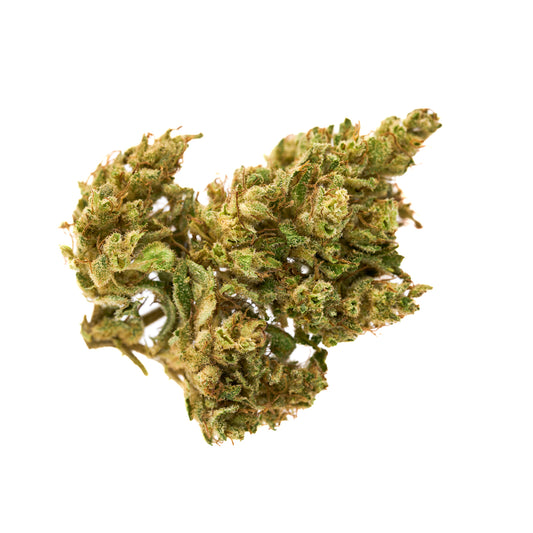
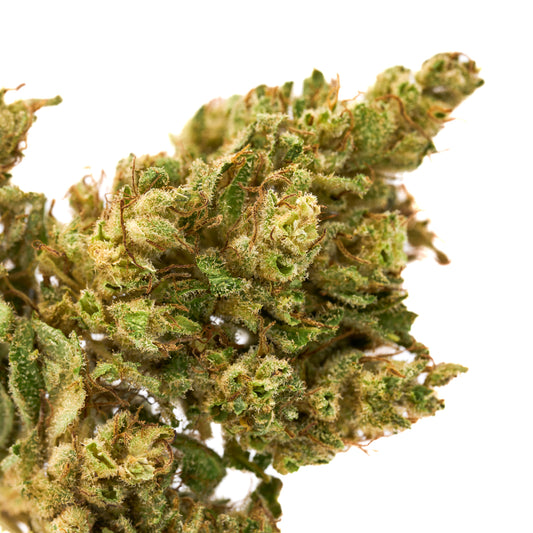
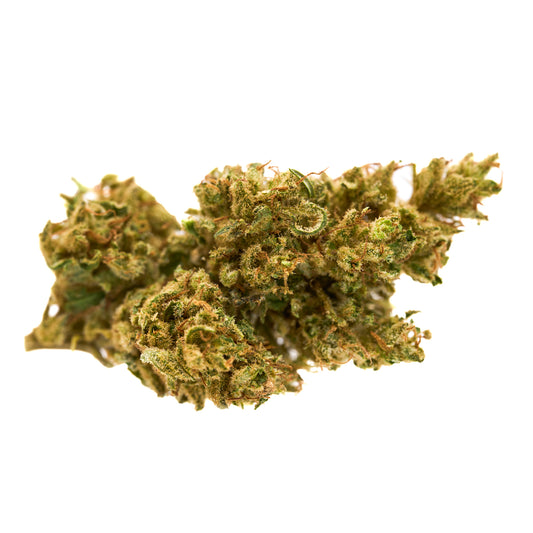
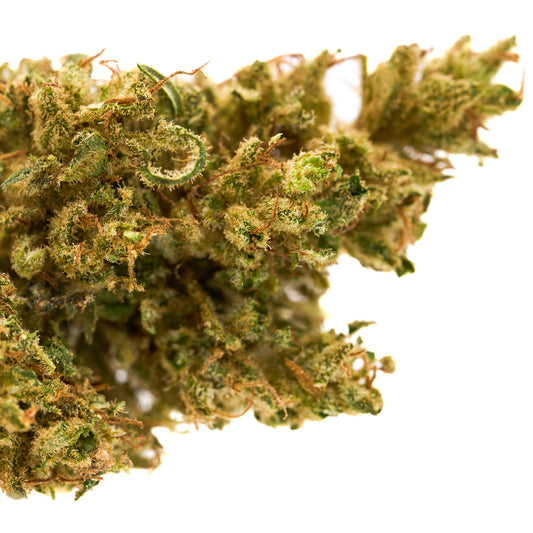
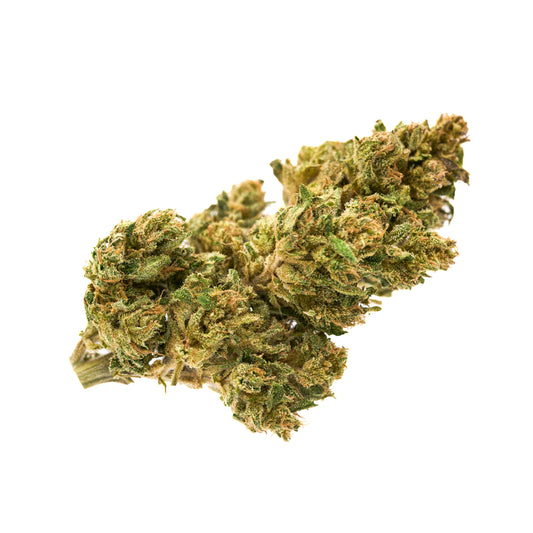
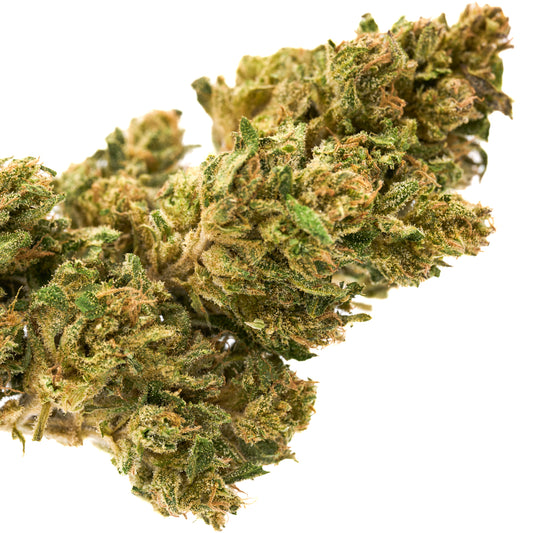



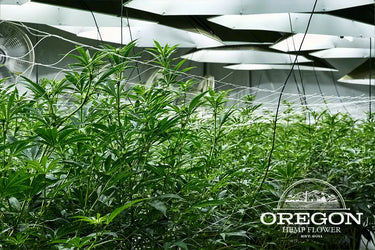

Leave a comment
Please note, comments need to be approved before they are published.